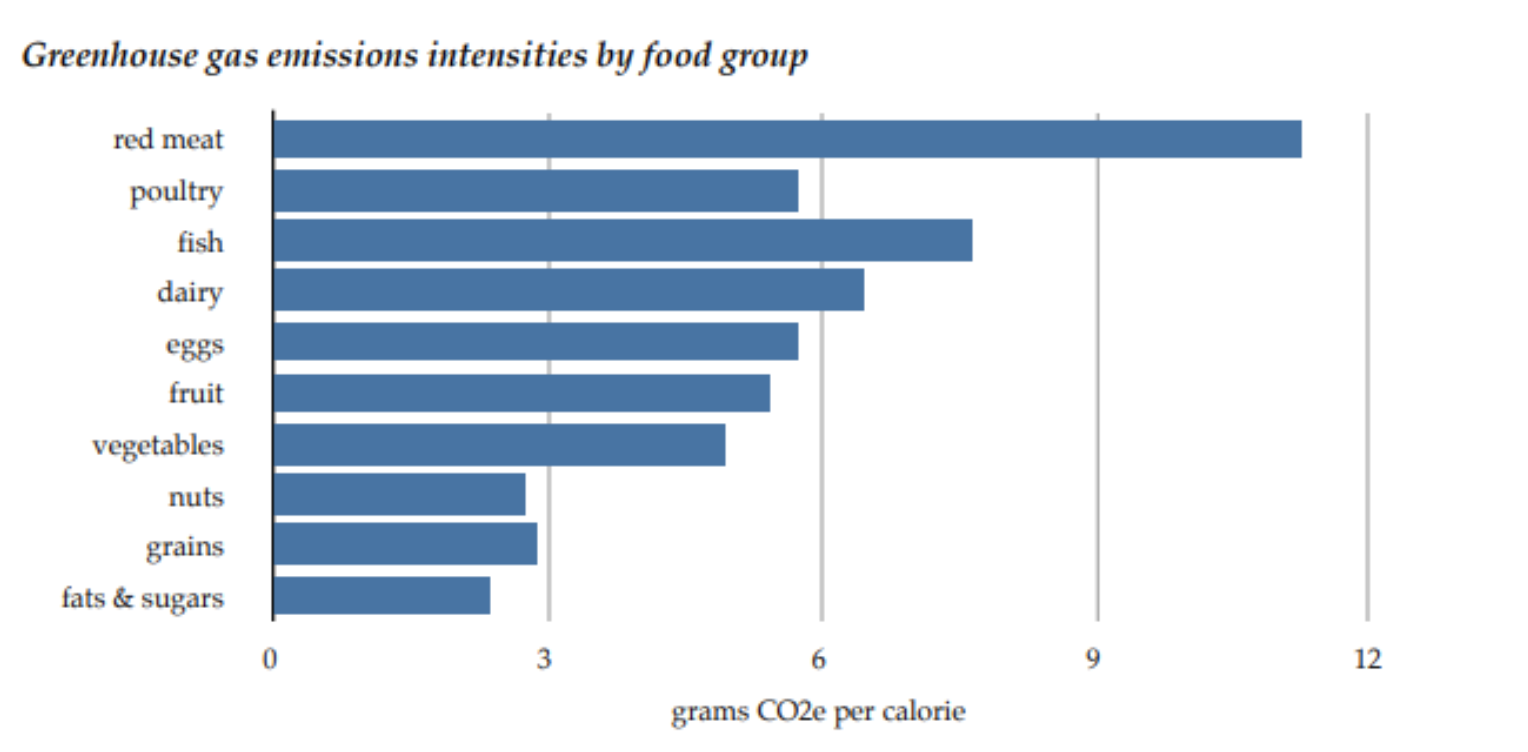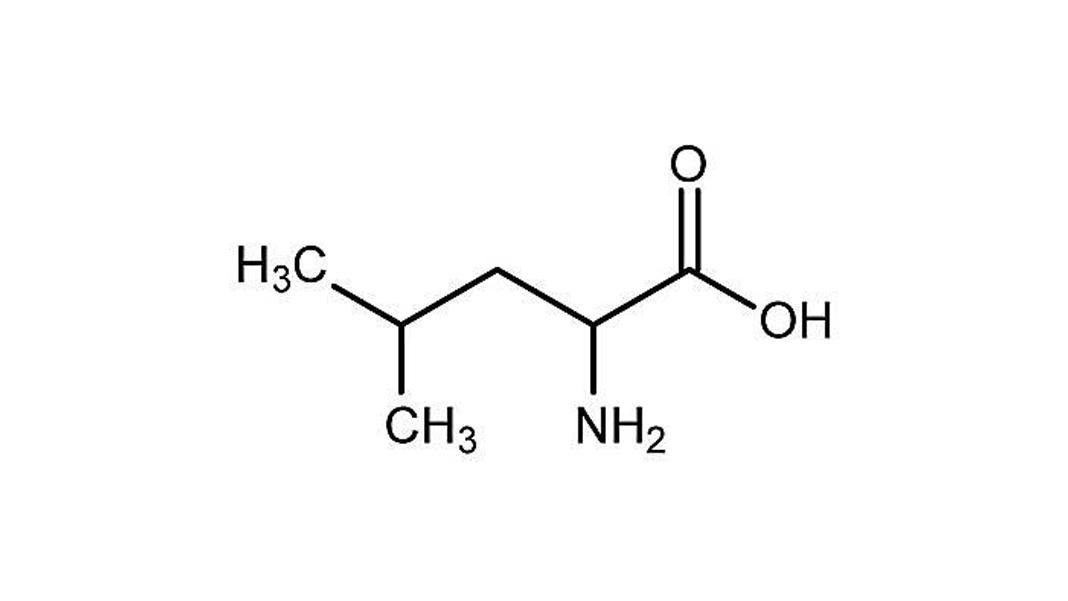Today’s guest is Alan Aragon and he joins us to talk about the protein requirements for maximizing muscle and longevity. Alan is a nutrition researcher and educator with over 20 years of success in the field. He is known as one of the most influential figures in the fitness industry’s movement towards evidence-based information. Our conversation explores whether protein sources other than those used in trials offer the same results for muscle growth, the protein requirements for maximizing MPS response and whether protein intake is a threat to longevity. Alan makes some great points about the higher importance of total protein intake over post workout protein intake, the caloric surplus required to optimize muscle gain in relation to fat gain, and the role of the musculoskeletal system in longevity. We also get into Alan’s transition from personal training and nutritional counseling to evidence-based content creation, how to have healthy debates online without creating enemies, and how to weigh up personal experience against evidence-based research. For an insightful conversation that covers a lot of ground on how to apply science to improve quality of life in the context of nutrition and fitness, tune in today.
Maximizing the Musculoskeletal System
By: Ariel Kamen, BSN, RN
Online health platforms have evolved with an integrity for evidence based content creation. This mindset was sparked into thought by Alan Argon and his 20 years of nutrition research. Bringing evidence to a conversation leads to a debate, but Argon humbly addresses the notion as being an informative chat when entering with the appropriate intentions. Personal anecdotes may be used to prove any piece of evidence but may not carry the weight of evidence-based research. At the end of the conversation, it still stands to go with whatever is best for the individual. Discussions about lifestyle and longevity must not be taken lightly and be carefully considered. As humanity, we must cultivate a wellness lifestyle on the individual level in order to make our small impact on the whole.
Alan Argon’s nutritional lens focuses on proteins and their microscopic components. He admits that protein powder dominates in the research and is a highly synthetic version of molecules from natural sources like grass fed beef. Consuming enough protein for muscle growth involves trial and error of both nutrition and exercise. In a study done on resistance training in young men, the results found that a plant-based diet (plant-based whole foods + soy protein isolate supplementation) is not different from a protein-matched mixed diet (mixed whole foods + whey protein supplementation) in supporting muscle strength and mass accrual (Hevia-Larraín et. al, 2021).
Protein supplementation and muscle strength through resistance training effects was more pronounced among trained participants and attenuated with increasing age (Messina, Lynch, Dickinson & Reed, 2018). These principles of muscle protein synthesis in trained individuals and in the aging process hold true for either protein source, as the adequate amount of protein required for older men and women needs to be revised and likely be higher (Naseeb & Volpe, 2017).
Protein Sustainability
During the COVID19 pandemic, the US Energy Information Administration released that total U.S. energy-related CO2 emissions decreased by 11% in 2020, or 570 million metric tons (MMmt) of CO2 relative to 2019. National reductions in travel and a warm winter are both micro-reasons for decreases in emissions. As our world continues to spin, daily lives are slowly evolving back into what they had been pre-pandemic and now more than ever it is important to discuss lifestyle behaviors that may compensate or contribute towards further declines in carbon emissions.

Reports by Global Agriculture show that beef production requires substantial land use, with 30 million square kilometers worldwide, accounting for 60% of the world’s agricultural land use. Beef production results in a fossil-fuel-to-energy ratio of 40:1, and all animal-based proteins demonstrate an average ratio of 25:1. This ratio is 11 times greater than that of grains, which proves the significant impact of animal-based protein consumption on the environment (Pimentel, 2003). Greenhouse gas emissions vary across protein sources as well, with beef producing 60 kg CO2 equivalents/kg, whereas soy produces less than 1 kg of CO2 equivalents, as plant-based proteins typically favor sustainability more than animal-based (Banaszek et.al, 2019). From a sustainability perspective, plant-based sources of protein have a profoundly miniscule impact on the environment compared with meat farming.
Molding muscle gains occur through muscle protein synthesis (MPS). MPS is driven by activity and nutrition status (Phillips, Hill & Atherton, 2012). Amino acids and energy (ATP) is required for MPS to occur. Rates of MPS are elevated in the hours after resistance exercise, it is important to note that skeletal muscle can retain sensitivity to the anabolic influence of protein ingestion for 24-28hrs (McGlory, Devries & Phillips, 2017). Muscle Protein Synthesis requires activation best by resistance training and nutritional intake of amino acids–the building block of proteins.
Leucine, one of the three branched-chain amino acids, has been extensively investigated for its ability to activate MPS. In particular, leucine activates MPS through the mTOR complex 1 (mTORC1) (Anthony et al., 2000). The mTOR complex 1 regulates cellular growth in response of SARB1 to serum levels of the amino acid, leucine. As a leucine sensor that regulates mTORC1 signaling, deficiency inhibits mTORC1 by physically targeting its activator GATOR2; while conditions of leucine sufficiency results in mTORC1 activation. SAR1B–GATOR2–mTORC1 signaling has a conserved role in the regulation of lifespan (Chen et. al, 2021).
Food Sources of Leucine 
- Chicken
- Beef
- Pork
- Eggs
- Fish (tuna)
- Tofu
- Canned beans
- Milk
- Cheese
- squash seeds
Protein Requirements for Maximizing the MPS response
Protein requirements are relative to age for maximizing the MPS response. Current official nutritional recommendations for protein intake in the elderly vary between 0.8 g (see official WHO, US and UK guidelines) and 1.2 g/kg BW/day (e.g., guidelines from Nordic countries, Australia, New Zealand). Breakpoint analysis (Moore et. al, 2015) revealed the protein intake required to maximally stimulate MPS in the older men was ~68% and ~140% greater than younger men when expressed relative to BM and LBM, respectively because older men are less sensitive to protein due to the aging process.
One study (Macnaughton et. al, 2016) concluded that MPS to ingestion of 20 or 40 g of whey protein following a bout of whole-body resistance exercise was greater in participants who consumed 40 g of protein.
A different study (Phillips, & Van Loon, 2011) synthesized that protein intakes in the range of 1.3-1.8 g/kg/day consumed as 3-4 isonitrogenous meals will maximize muscle protein synthesis.
Total protein intake is more important than what we get post-workout. Protein timing is a popular dietary strategy designed to optimize the adaptive response to exercise. The strategy involves consuming protein in and around a training session in an effort to facilitate muscular repair and remodeling, and thereby enhance post-exercise strength- and hypertrophy-related adaptations. Although this seems plausible, the effectiveness of protein timing in chronic training studies has been refuted (Schoenfeld, Aragon & Krieger, 2013).
Recent evidence suggests that the macronutrient balance and single nutrients, such as protein, play a more crucial role in longevity and metabolic health than total calorie intake (Kitada, Ogura, Monno & Koya, 2019). Diets higher in protein throughout the lifespan pose risk for developing glomerular hypertension and consequently, kidney disease (Ko et. al, 2020); making hydration of the utmost importance when consuming any form of protein.
Contrary to the protein requirements for MPS, restricting amino acid and protein intake generally decreases aging-related comorbidities and thereby increases health and longevity (Brandhorst & Longo, 2019). Longevity requires holistic considerations of the individual’s sex, age, environment, diet, and training goals. High protein intake for the sake of MPS is not necessary in alignment with protein intake to promote longevity.
The happy medium between VO2 max and Type 2 muscle fiber
Simply stated, VO2 max is a health metric that shows general athleticism. VO2 max is a biometric that deliniates the maximum of oxygen (O2) uptake by muscular cells. The moment when energy consumption by muscles–during anaerobic (explosive) exercise is gone and you are unable to continue any further, that moment of “i cannot go on” means you have reached your VO2 max. VO2 max is typically measured in milliliters of oxygen consumed in a minute per kilogram of body weight (mL/kg/min). Having a higher VO2 max number typically means adequate cardiovascular shape, but increasing VO2 max can be achieved by losing body fat.
Type 2 muscle fiber is referred to as fast twitch and broken down into Type 2a and Type 2x. Type 2a is fast twitch oxidative/glycolytic and pink in color. Type 2a requires moderate power and some endurance. On the other hand, Type 2x are fast twitch glycolytic and white in color from minimal amounts of myoglobin. Type 2x produces high force and power with little to no endurance. The major difference between Type 2 muscle fibers is their ability to utilize oxygen, as evidence of their color.
Muscles are primarily composed of water which requires greater demand of oxygenation in order to preserve. The link between VO2 max and Type 2 muscle fibers is oxygen. By nature, the activity associated with enhancing Type 2 muscle fiber genesis, such as sprinting and other HIIT/explosive exercises, improves VO2 max because these muscles consume way more oxygen to draw in water and provide nuclei bulking seen in these body types. Preserving Type 2 muscle fibers promotes longevity by creating enough cardiovascular demand to preserve cellular age. 
Fick Principle
Oxygen uptake during exercise is dependent on heart rate, stroke volume and arterial-mixed venous oxygen difference.
VO2 max = (CO x Ca) – (CO x Cv)
VO2 max = CO x AVO2 difference
CO = cardiac output
Ca = oxygen content of arterial blood
Cv = oxygen content of venous blood
Adolf Eugen Fick was a German physician and physiologist who first discussed organ perfusion during a lecture he gave in 1870. He discussed that the degree to which these variables can be increased, have profound effects on increasing total VO2 max. AVO2 difference delineates the oxygenation between arterial and venous blood. From a physiological perspective, the ventricles of the heart pump blood to the lungs for oxygenation and outwards to the brain, organs, and limbs. Cardiovascular function allows blood to be transported to its respective organ for oxygenation and perfusion. Any hint of cardiovascular dysfunction can be detected by understanding the teachings of Dr. Fick.
To best manipulate this equation at the physical level, the focus is on stroke volume. Stroke volume is the amount of volume and resistance that the heart can endure. With proper hydration and HIIT, the heart is trained to contract more efficiently to circulate the amount of fluid in the bloodstream. Interval training creates high demands for the vasculature and heart to train depending on the type of exercise and recovery time.
During any exercise, the first 20 seconds of energy uses creatine-phosphate stores. From 90 seconds to 2 minutes, the breakdown of glycogen (glycolysis) fuels the body during training. After 2 minutes, energy is obtained from burning fat for fuel. HIIT allows the body to deplete energy from each of these units and then takes time (avg~ 60 seconds) to recover and then exert energy all over.
Resistance training performed at slow paces has the ability to increase the heart rate similar but not as robust as seen during sprints. The mechanism of Type 2 muscle fiber synthesis improves VO2 max from oxygen utilization and uptake at the cellular level.
Whether young people should focus on maximizing hypertrophy or finding a balance to maintain in later years.
Quality and length of life is associated with the ability to maintain musculoskeletal function in adult years (Roberts et. al, 2016). Decreases in musculoskeletal function are associated with pain and immobility. Although maximizing hypertrophy to appear as the buffest bro in the gym sounds exhilarating, promoting longevity will be crucial towards the end of our days.
We asked our team of biohackers what they thought – here are some of their responses:
“…depends on what your goal is. Functionality is more important. When I was 22, hypertrophy did not allow me to be the full human expression on myself. Each decade, it is necessary to draw from your health in the previous decade to use for the years ahead.” – Steve W
“young people should maximize hypertrophy, but you can’t just have a bulk dude who can’t tie his shoe” – Roman A
“The maximum is different for everyone.” – Ariel K.
Despite the opinions of these biohackers, biohacking in an individualized pursuit completely depends on what the person is looking to achieve. If the goal is to maximize hypertrophy then there are ways to achieve it, potentially at the risk of longevity.
The caloric surplus required to optimize muscle gain in relation to fat gain.
In an article from Sports, authors note that advanced bodybuilders should avoid caloric surplus to optimize muscle gain.
Sufficient protein (1.6-2.2 g/kg/day) should be consumed with optimal amounts 0.40-0.55 g/kg per meal and distributed evenly throughout the day (3-6 meals) including within 1-2 hours pre- and post-training. Fat should be consumed in moderate amounts (0.5-1.5 g/kg/day). Remaining calories should come from carbohydrates with focus on consuming sufficient amounts (≥3-5 g/kg/day) to support energy demands from resistance exercise. Creatine monohydrate (3-5 g/day), caffeine (5-6 mg/kg), beta-alanine (3-5 g/day) and citrulline malate (8 g/day) might yield ergogenic effects that can be beneficial for bodybuilders. (Iraki, Fitschen, Espinar & Helms, 2019).
Caloric surplus, once again, is individualized depending on the person’s body surface area and activity level. If optimizing muscle gain in relation to fat gain interests you, a multifaceted approach of HIIT and resistance training can allow you to maximize muscle gains over the long run.
Whether to consider dirty bulking and if it influences the satiety effect.
Eating as much food as possible to maximize muscle gains. Considering that a dirty bulk usually includes highly processed foods, it comes with risks of negative side effects, such as excess fat gain, sluggishness, and abnormal blood glucose values. Obtaining calories from highly processed foods provides satiety effects for shorter periods of time, as opposed to eating nutrient dense foods which maintain satiety for longer (Tremblay & Bellisle, 2015).
Dirty bulking is risky amongst the obesity epidemic. When dirty bulking, it is absolutely necessary to maintain adequate levels of caloric usage to minimize the amount of weight gain from fat over muscle. To facilitate appetite control in high performers, consuming nutrient dense foods is a more effective way to both bulk and maintain satiety.
Looking at different food groups and their effects on satiety are evident that in fats and carbohydrates, high quality (less processed) sources influence satiety more optimally than their low quality counterparts. Hyper-palatability is the ease of consumption of food, it is how delicious and easy it is to consume, which is usually a combination of refined carbohydrates and fats, and then the flavoring agents which enhance the ease of consumption. Hyper-palatability negatively affects hunger control. Water and fiber contribute positively to hunger control. For example, eating a whole apple versus eating its equivalent in apple juice, there will be distinct time and effort it takes to consume food and for how long the body is satisfied.
Why protein powders can be considered an exception to the rule that highly processed food is low-quality.
The typical school of thought about food quality is — the more processed, the less food quality. This principle seems to apply to all things except protein powders. Protein powders are mass produced and used ultrafiltration machines to extract the powder within the supplement bottle. Although highly processed, protein powders contain a highly diverse profile of proteins than that of their whole food origins. The functionality of proteins have shown exceptional effects both clinically and in body composition. Protein powders have high levels of nutrition for the amount of calories they provide, making them the exception to the rule that highly processed food is low-quality.
“The mere act of chewing foods contributes to the satiety effect. It adds to the brain signaling that says, ‘hey I am consuming something and i am not going to need to eat anything in the next hour to survive.’”
Whether there would be a difference in gains if two twins ate different things after a workout.
Our host, Andres Preschel asks: If two twins are doing the same exact workout. One twin eats carbs during their post workout meal, the other does not, would one of them see greater gains?
Our guest Alan Aragon responds “if you delay the consumption of carbs post workout, then you are delaying the repletion of glycogen stores. For about 10 years it was thought that you have to have protein and carbs together to maximize muscle protein synthesis post exercise. If these twins were consuming 20-25g of proteins post workout, any additional carbs would not make any meaningful difference.”
Alan’s thoughts on BCAAs versus essential amino acids.
Amino acids are the building blocks of proteins. In total there are 20 amino acids that are delineated by their needs through nutrition. Branched Chain Amino Acids (leucine, isoleucine, and valine) are only 3 amino acids within the full spectrum of proteins. Alan Aragon, KYP’s muscle protein synthesis expert says “EAA over BCAA, because essential amino acids provide a full complement of amino acids to maximize protein response much more than the three limiting branched chain amino acids.” 
Failing to obtain enough sources of any amino acids has significant implications for physiological dysfunction. Full spectrum amino acid consumption is necessary to promote aging in favorable ways.
On Episode 38 of the KnowYourPhysio podcast, Alan Aragon discusses all things musculoskeletal. We learn from him about MPS and its relevance to VO2 max, nutrition, and longevity. For more information or personalized coaching related to muscle protein synthesis, connect with one of our coaches here.
KnowYourPhysio to maximize your musculoskeletal system.
References
Anthony, J.C., Yoshizawa, F., Anthony, T.G., Vary, T.C., Jefferson, L.S., & Kimball, S.R. (2000). Leucine stimulates translation initiation in skeletal muscle of postabsorptive rats via a rapamycin-sensitive pathway. Journal of Nutrition, 130, 2413–2419. PubMed ID: 11015466 doi:10.1093/jn/130.10.2413
Banaszek A., Townsend J.R., Bender D., Vantrease W.C., Marshall A.C., Johnson K.D. (2019). The Effects of Whey vs. Pea Protein on Physical Adaptations Following 8-Weeks of High-Intensity Functional Training (HIFT): A Pilot Study. Sports, 7:12. doi: 10.3390/sports7010012
Brandhorst, S., & Longo, V. D. (2019). Protein Quantity and Source, Fasting-Mimicking Diets, and Longevity. Advances in nutrition (Bethesda, Md.), 10(Suppl_4), S340–S350. https://doi.org/10.1093/advances/nmz079
Chen, J., Ou, Y., Luo, R., Wang, J., Wang, D., Guan, J., Li, Y., Xia, P., Chen, P. R., & Liu, Y. (2021). SAR1B senses leucine levels to regulate mTORC1 signaling. Nature, 596(7871), 281–284. https://doi.org/10.1038/s41586-021-03768-w
Church, D. D., Hirsch, K. R., Park, S., Kim, I. Y., Gwin, J. A., Pasiakos, S. M., Wolfe, R. R., & Ferrando, A. A. (2020). Essential Amino Acids and Protein Synthesis: Insights into Maximizing the Muscle and Whole-Body Response to Feeding. Nutrients, 12(12), 3717. https://doi.org/10.3390/nu12123717
Franzke, B., Neubauer, O., Cameron-Smith, D., & Wagner, K. H. (2018). Dietary Protein, Muscle and Physical Function in the Very Old. Nutrients, 10(7), 935. https://doi.org/10.3390/nu10070935
Hevia-Larraín, V., Gualano, B., Longobardi, I., Gil, S., Fernandes, A. L., Costa, L., Pereira, R., Artioli, G. G., Phillips, S. M., & Roschel, H. (2021). High-Protein Plant-Based Diet Versus a Protein-Matched Omnivorous Diet to Support Resistance Training Adaptations: A Comparison Between Habitual Vegans and Omnivores. Sports medicine (Auckland, N.Z.), 51(6), 1317–1330. https://doi.org/10.1007/s40279-021-01434-9
Iraki, J., Fitschen, P., Espinar, S., & Helms, E. (2019). Nutrition Recommendations for Bodybuilders in the Off-Season: A Narrative Review. Sports (Basel, Switzerland), 7(7), 154. https://doi.org/10.3390/sports7070154
Jenkins D.J.A., Kendall C.W.C., Augustin L.S.A., Mitchell S., Sahye-Pudaruth S., Blanco Mejia S., Chiavaroli L., Mirrahimi A., Ireland C., Bashyam B., et al. (2012). Effect of legumes as part of a low glycemic index diet on glycemic control and cardiovascular risk factors in type 2 diabetes mellitus: A randomized controlled trial. Arch. Intern. Med. 172:1653–1660. doi: 10.1001/2013.jamainternmed.70.
Kitada, M., Ogura, Y., Monno, I., & Koya, D. (2019). The impact of dietary protein intake on longevity and metabolic health. EBioMedicine, 43, 632–640. https://doi.org/10.1016/j.ebiom.2019.04.005
Ko, G. J., Rhee, C. M., Kalantar-Zadeh, K., & Joshi, S. (2020). The Effects of High-Protein Diets on Kidney Health and Longevity. Journal of the American Society of Nephrology : JASN, 31(8), 1667–1679. https://doi.org/10.1681/ASN.2020010028
Macnaughton, L. S., Wardle, S. L., Witard, O. C., McGlory, C., Hamilton, D. L., Jeromson, S., Lawrence, C. E., Wallis, G. A., & Tipton, K. D. (2016). The response of muscle protein synthesis following whole-body resistance exercise is greater following 40 g than 20 g of ingested whey protein. Physiological reports, 4(15), e12893. https://doi.org/10.14814/phy2.12893
McGlory, C., Devries, M. C., & Phillips, S. M. (2017). Skeletal muscle and resistance exercise training; the role of protein synthesis in recovery and remodeling. Journal of applied physiology (Bethesda, Md. : 1985), 122(3), 541–548. https://doi.org/10.1152/japplphysiol.00613.2016
Meat and animal feed. Global Agriculture. (n.d.). Retrieved April 5, 2022, from https://www.globalagriculture.org/report-topics/meat-and-animal-feed.html
Messina, M., Lynch, H., Dickinson, J. M., & Reed, K. E. (2018). No Difference Between the Effects of Supplementing With Soy Protein Versus Animal Protein on Gains in Muscle Mass and Strength in Response to Resistance Exercise. International journal of sport nutrition and exercise metabolism, 28(6), 674–685. https://doi.org/10.1123/ijsnem.2018-0071
Moore, D. R., Churchward-Venne, T. A., Witard, O., Breen, L., Burd, N. A., Tipton, K. D., & Phillips, S. M. (2015). Protein ingestion to stimulate myofibrillar protein synthesis requires greater relative protein intakes in healthy older versus younger men. The journals of gerontology. Series A, Biological sciences and medical sciences, 70(1), 57–62. https://doi.org/10.1093/gerona/glu103
Morton, R.W., Murphy, K.T., McKellar, S.R., Schoenfeld, B.J., Henselmans, M., Helms, E., . . . Phillips, S.M. (2017). A systematic review, meta-analysis and meta-regression of the effect of protein supplementation on resistance training-induced gains in muscle mass and strength in healthy adults. British Journal of Sports Medicine, 52, 376–384. PubMed ID: 28698222
Naseeb, M. A., & Volpe, S. L. (2017). Protein and exercise in the prevention of sarcopenia and aging. Nutrition research (New York, N.Y.), 40, 1–20. https://doi.org/10.1016/j.nutres.2017.01.001
Phillips, B. E., Hill, D. S., & Atherton, P. J. (2012). Regulation of muscle protein synthesis in humans. Current opinion in clinical nutrition and metabolic care, 15(1), 58–63. https://doi.org/10.1097/MCO.0b013e32834d19bc
Phillips, S. M., & Van Loon, L. J. (2011). Dietary protein for athletes: from requirements to optimum adaptation. Journal of sports sciences, 29 Suppl 1, S29–S38. https://doi.org/10.1080/02640414.2011.619204
Pimentel D., Pimentel M. (2003) Sustainability of meat-based and plant-based diets and the environment. Am. J. Clin. Nutr. 78, 660S–663S. doi: 10.1093/ajcn/78.3.660S.
Rabanal-Ruiz, Y., Otten, E. G., & Korolchuk, V. I. (2017). mTORC1 as the main gateway to autophagy. Essays in biochemistry, 61(6), 565–584. https://doi.org/10.1042/EBC20170027 MTORC1 image
Roberts, S., Colombier, P., Sowman, A., Mennan, C., Rölfing, J. H., Guicheux, J., & Edwards, J. R. (2016). Ageing in the musculoskeletal system. Acta orthopaedica, 87(sup363), 15–25. https://doi.org/10.1080/17453674.2016.1244750
Schoenfeld, B.J., Aragon, A.A. & Krieger, J.W. (2013). The effect of protein timing on muscle strength and hypertrophy: a meta-analysis. J Int Soc Sports Nutr 10, 53. https://doi.org/10.1186/1550-2783-10-53
Tremblay, A., & Bellisle, F. (2015). Nutrients, satiety, and control of energy intake. Applied physiology, nutrition, and metabolism = Physiologie appliquee, nutrition et metabolisme, 40(10), 971–979. https://doi.org/10.1139/apnm-2014-0549
U.S. Energy Information Administration – EIA – independent statistics and analysis. U.S. Energy Information Administration (EIA) – Ap. (n.d.). Retrieved April 5, 2022, from https://www.eia.gov/environment/emissions/carbon/
Vo2 Max: How to measure and improve it. Cleveland Clinic. (2022). Retrieved from https://health.clevelandclinic.org/what-is-vo2-max-and-how-to-calculate-it/
Images:
Cardio vs. weights: Which is really better for fat loss? Precision Nutrition. (2021, October 29). Retrieved April 11, 2022, from https://www.precisionnutrition.com/rr-cardio-vs-weights
Chemical Compound Diagram. Poly-L-leucine, Thermo Scientific | Fisher Scientific. (n.d.). Retrieved April 11, 2022, from https://www.fishersci.com/shop/products/poly-l-leucine-thermo-scientific/AC3275825
Public Broadcasting Service. (2019, September 25). Cow farts aren’t the only food-related climate culprit. PBS. Retrieved April 11, 2022, from https://www.pbs.org/wnet/peril-and-promise/2019/08/cow-food-emissions-climate/
FineArtAmerica.com. Fine Art America. (n.d.). Retrieved May 31, 2022, from https://fineartamerica.com/








